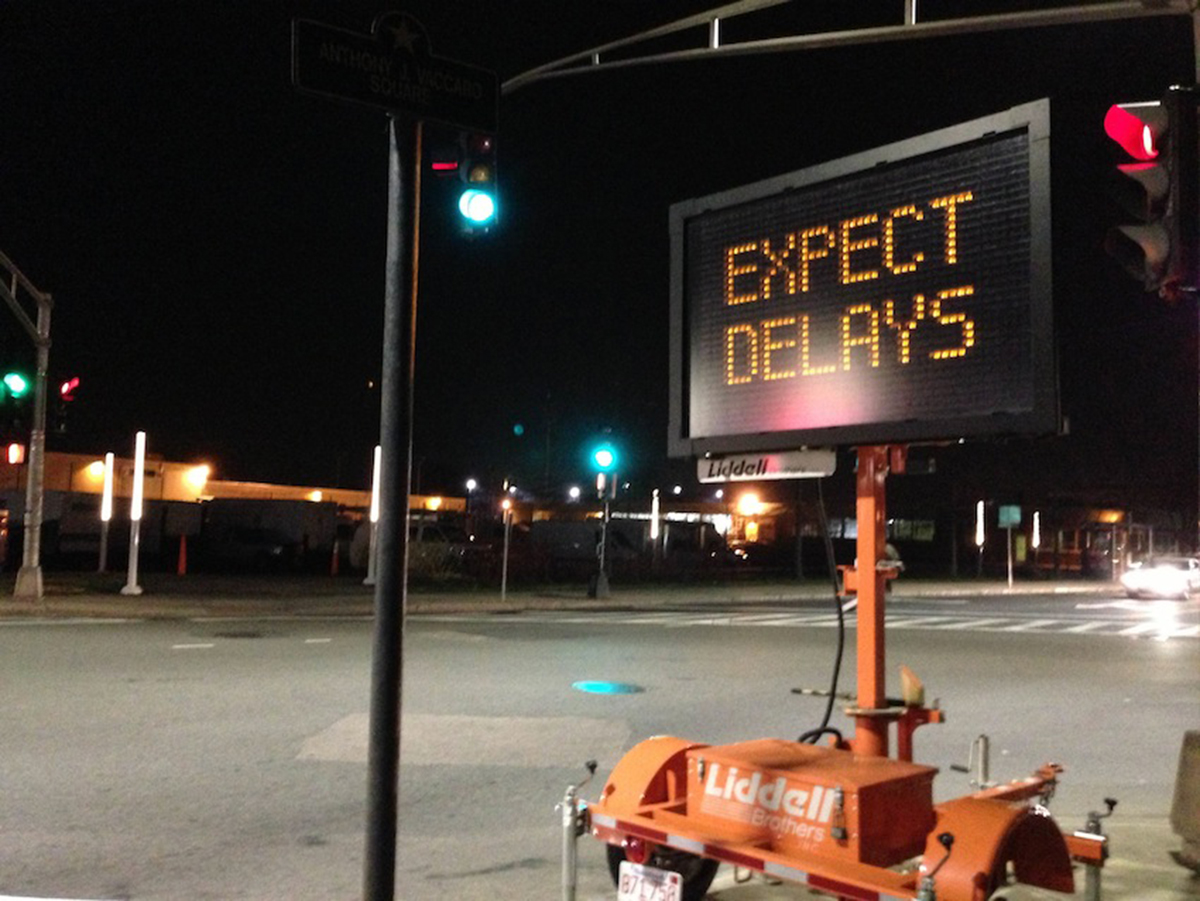Boston Has Three of the Worst Traffic Bottlenecks in America

Photo by Steve Annear
A new study of the 50 worst highway bottlenecks in the country from the American Highways Users Alliance found Boston has three of the nation’s worst traffic nightmares.
Only three, you say?
Hey, it could be worse: Los Angeles led the country with 12, while New York City placed second with nine. Top honors went to a 12 mile stretch of Interstate 90 in Chicago.
The report, Unclogging America’s Arteries 2015, ranked the entire Central Artery, stretching from the MassPike to the Tobin Bridge split, the 15th worst bottleneck in the country. Drivers waste 2.1 million hours of their lives and lose $58 million in economic productivity while sitting in traffic on this stretch of highway. The gridlock at the 1.9 mile stretch consumes nearly 2 million gallons in wasted gasoline. The worst part of the bottleneck is where the MassPike and I-93 meet in the South End.
A 1.2 mile stretch of the Southeast Expressway between the Adams Street exit in Milton and the Braintree split by the South Shore Plaza was found to be the 28th worst traffic bottleneck in the country. This headache for drivers wastes one million hours a year and costs approximately $28 million in lost economic output. Drivers on this stretch of the Southeast Expressway spend more time looking at the lovely Crown Colony office park than they do actually moving to where they need to be.
Rounding out the top 50 worst bottlenecks in the country is the underground connector in South Boston between the MassPike and the Ted Williams Tunnel to Logan Airport. The report found that the delays on this stretch consume 200,000 hours of time and cost $7,000,000 in economic productivity.
The report finds that there are number of ways to address problem bottlenecks, but the bulk of the solutions do not involve increasing capacity through widening. For Boston, road work is a complex solution, because two of three bottlenecks are predominantly underground where road construction is costly. Widening highways to relieve congestion has been found to not be a silver bullet for bottlenecks, as it often leads to more traffic—the logjam just happens somewhere else on the same road, creating a new bottleneck, or worse, the widened roads can create more traffic at the existing problem area.
A better approach, according to the report, is to make modest improvements to the roads based on existing and projected traffic patterns. “Capacity can
be increased by upgrading design features, realigning tight curves or steep grades, improving visibility, repaving and restriping surfaces, reconfiguring merges and interchanges, or rebuilding common chokepoints like outdated bridges,” said the report.
If construction and redesign options are limited, as they are in Boston, technological improvements can improve traffic flow. Better real-time traffic reporting that encourages alternative routes, metered access at on-ramps that stagger the flow of traffic, and expanded usage of managed lanes that operate at peak travel times, such as the high occupancy vehicle lane (commonly called the zipper lane) on the Southeast Expressway, can all do a lot to improve the flow of traffic.
More drivers taking public transportation instead of using their single occupancy vehicles to get to work would do a lot to relieve traffic congestion, too.


